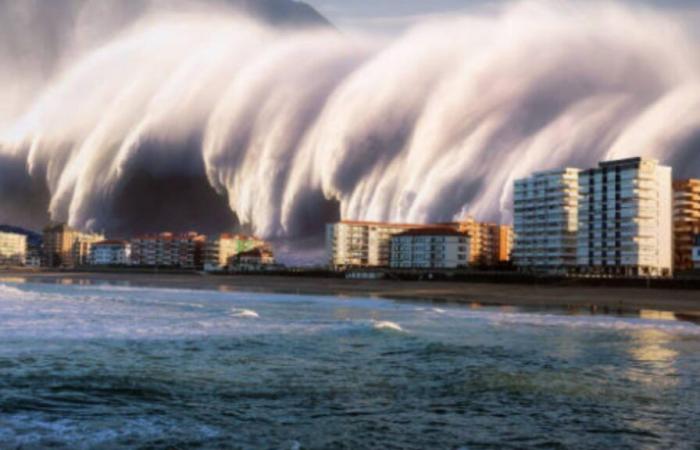A team of researchers has identified a Spanish city that is at extremely elevated risk to a possible tsunami, according to recent scientific studies. Experts warn that this natural phenomenon could occur in the near future with potentially catastrophic consequences for the population and infrastructure.
The scientific community has confirmed, through sophisticated predictive models, the particular vulnerability of this coastal town, indicating the need to prepare for adverse scenarios. This threat is registered in the context of the effects of climate change, which is altering the oceanic and seismic patterns with unprecedented historical intensity.
The simulations indicate that this Spanish population could suffer significant destruction in case of the Tsunami. Given this situation, the authorities are evaluating preventive measures and evacuation protocols, while specialists remember that these phenomena, although uncommon on Spanish Mediterranean and Atlantic coasts, are not impossible.
Early alert systems and urban planning adapted to these risks are considered fundamental elements to mitigate the potential impact of this phenomenon, which could be developed with little margin for reaction.
-Science confirms it
Spain, for its peninsular condition, could be seriously affected by factors that until now had not been considered priority In emergency planning. The sea, a traditional source of resources and well -being, could be transformed into a considerable threat under certain circumstances.
The magazine National Geographic defines the phenomenon: «The word tsunami or Sunami comes from the Japanese terms ‘tsu’ (port or bay) and ‘nami’ (wave). This international term describes the arrival of a series of waves that impact the coast, caused by submarine earthquakes, volcanic eruptions, landslides, underwater nuclear detonations or the impact of large meteorites. Although the term ‘tidal’ has frequently used, scientists prefer to avoid it since these waves are not caused by tides. Unlike the common waves generated by the wind, tsunami waves have distinctive characteristics and most do not ‘break’ like traditional beach waves.
This Spanish city is at very serious by tsunami
Studies on the possibility of a tsunami in the not too distant future in the Mediterranean area put this coast especially populated in our country. The impact of a tsunami in this area could be really devastating if we take into account some important details.
As explained by a recent article from the magazine Springer Nature: «The risk of Tsunami is considered as the probability that a particular coast is beaten by a tsunami that can cause a certain level of impact (destructive). The impact metric of a tsunami is expressed in terms of intensity values of the tsunami, K, assigned on a scale of 12 degrees. To calculate the risk of Tsunami we rely on the history of tsunamis of the region encoded in tsunamis catalogs. The probabilistic model adopted was successfully used for the evaluation of earthquake risk (Kijko et al. In Bull sixmol SOC am 79: 645-654, 2016) and Tsunamis (Smit et al. In EnvironmentMetics 30: E2566, 2019) considering the seismic magnitude and the height of the Tsunami as metric of the respective hazards. In this model, instead of risk metrics, we insert the risk metric, that is, the impact of waves in terms of intensity values. The procedure allows the use of the entire data set that consists not only in the full (recent) part of the tsunamis catalog, but also in the highly incomplete and uncertain historical part of the catalog. The risk is evaluated in terms of probabilities of overcoming and return periods of certain intensity values in specific time frames. We apply the model using catalogs for the Mediterranean and the connected seas. The sensitivity analysis showed that the use of complete data sets generally provided more realistic results than the use of complete data sets. The results indicated that the level of risk depends on the level of seismicity and not the size of the individual oceanic basin. The highest tsunami risk was found in the Eastern Mediterranean (EM), with a significantly lower risk in the Western Mediterranean (WM). In the Marmara Sea (MS), Tsunami’s risk was low, and the lowest was in the Black Sea (Bs). The risk in the small Gulf of Corinth (CG, Central Greece) was comparable to that of WM. The harmful tsunamis return period (that is, K ≥ 7) was 22 years throughout the Mediterranean Basin and 31, 118, 135, 424 and 1660 years in the EM, WM, CG, MS and BS basins, respectively ».






